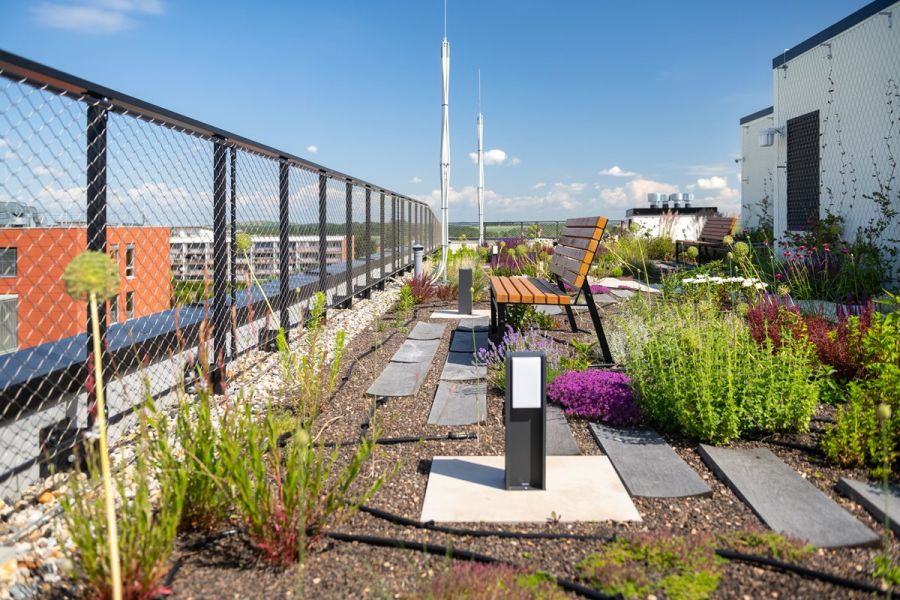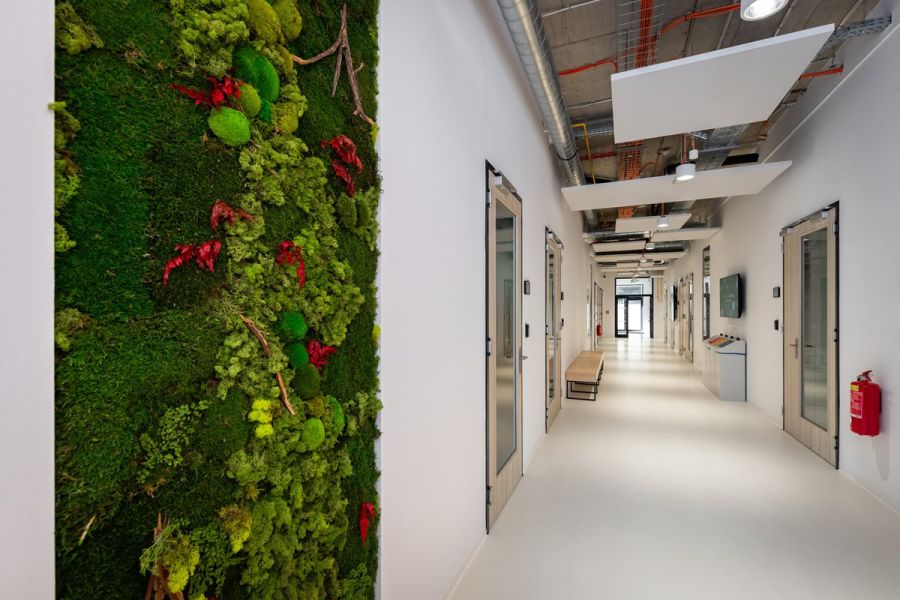The Pavilion for Environmental Studies at the Czech University of Life Sciences has won the Adapterra Awards for the best climate change adaptation project in Prague. This building combines space for education and research with sustainable public construction, featuring a façade covered with around 12,300 plants.
The new Faculty of Environmental Studies building is closely integrated with the adjacent campus and is officially considered an extension. However, it stands out due to its unique appearance, choice of materials, and specialized functions.
“The Czech University of Life Sciences has succeeded in realizing an ambitious and challenging project that fully aligns with our climate plan. I hope that similar projects with blue-green infrastructure will increase across the capital and that more such publicly funded projects will emerge in general. As a capital city, we must lead by example and showcase what high-quality sustainable construction can look like,” said Jana Komrsková, Prague’s Deputy Mayor for the Environment and Climate Plan.

The green façade, the building’s most striking feature, not only provides aesthetic value but also cools the surrounding area in summer, improves air quality, supports urban biodiversity, and reduces noise. On the flat roof, a 530-square-metre garden houses technical equipment for ventilation and air conditioning.
Rainwater collected from the roofs and façades flows into a pond next to the building. From there, it is filtered through a vertical root system and stored in tanks, where it is treated alongside grey water. This water meets up to 80% of irrigation needs, managed by sensors and weather stations.

The pavilion is energy-efficient, with an intelligent system controlling lighting and air conditioning. The interior is also adapted to users’ needs: moss walls, preserved through faculty research, adorn the corridors. “The new pavilion serves as a living laboratory. All installed technologies are part of the university’s research and education processes. The modern laboratories, offices, classrooms, and studios are also accessible to other faculties,” explained Eva Soulková, representing the Czech University of Life Sciences.
This year, the Adapterra Award jury and the public selected winners from 20 finalists, announced on 6 November at the Conference on Water and Public Space in Prague. All projects are showcased in the online #jaknaklima database at www.adapterrawards.cz, offering inspiration to municipalities, individuals, and companies seeking proven solutions to prepare cities and landscapes for increasing climate extremes.
